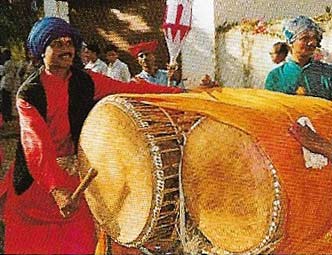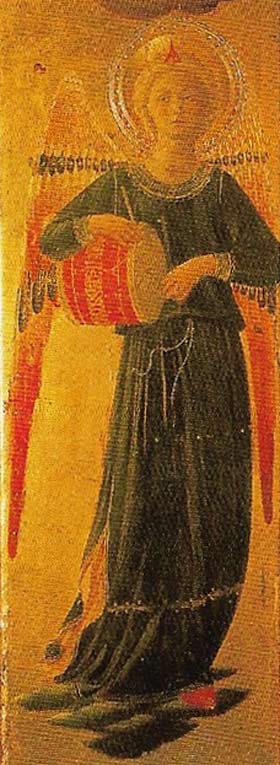drumhead

The Indian dhol has two indefinitely pitched heads, each with a loud deep sound. The drum is used to herald public announcements and to lead processions.
The drumhead is the covering or membrane that stretches over a drum to produce its sound. Drumheads are made of animal skin or synthetic plastics.
When a drum is struck, the membrane membrane vibrates in both a circular and a segmental pattern, producing a fundamental tone and various harmonic overtones, the number and strength of which affect the timbre of the instrument. The timbre and apparent pitch of the drum also vary according to the type of heater used, the degree of hardness or softness of the beater and its contact area on the drum head. Hard beaters produce high overtones while light ones have virtually none.
The sound of the drum is also influenced by the place where the membrane is struck. If this is at the edge, high overtones will be elicited, while if it is hit at or near the center, deeper tones will predominate. Percussionists get to know their instruments and know the place on the membrane (the "beating spot") that is best to strike.
The first drumheads were made of hide, but animal skin reacts strongly to changes in atmospheric humidity, so today artificial materials such as plastic are used. Early side drum heads were tensioned with ropes drawn into V-shapes, with leather buffs at the point of each V which were drawn to tighten the ropes and thus increase the tension. Other methods were introduced later, the most usual being rods with screw nuts.
 |
| One of 12 musical angels painted by the Italian painter Fra Agelico in 1433, This one is playing a drum with a parchment head. |
Until World War II, most drums were single-tensioned, with one screw working on both heads. However, as most players prefer to have one head tighter than the other, double-tensioning was introduced, whereby each head is separately controlled by rods that screw into blocks halfway down the shell.


